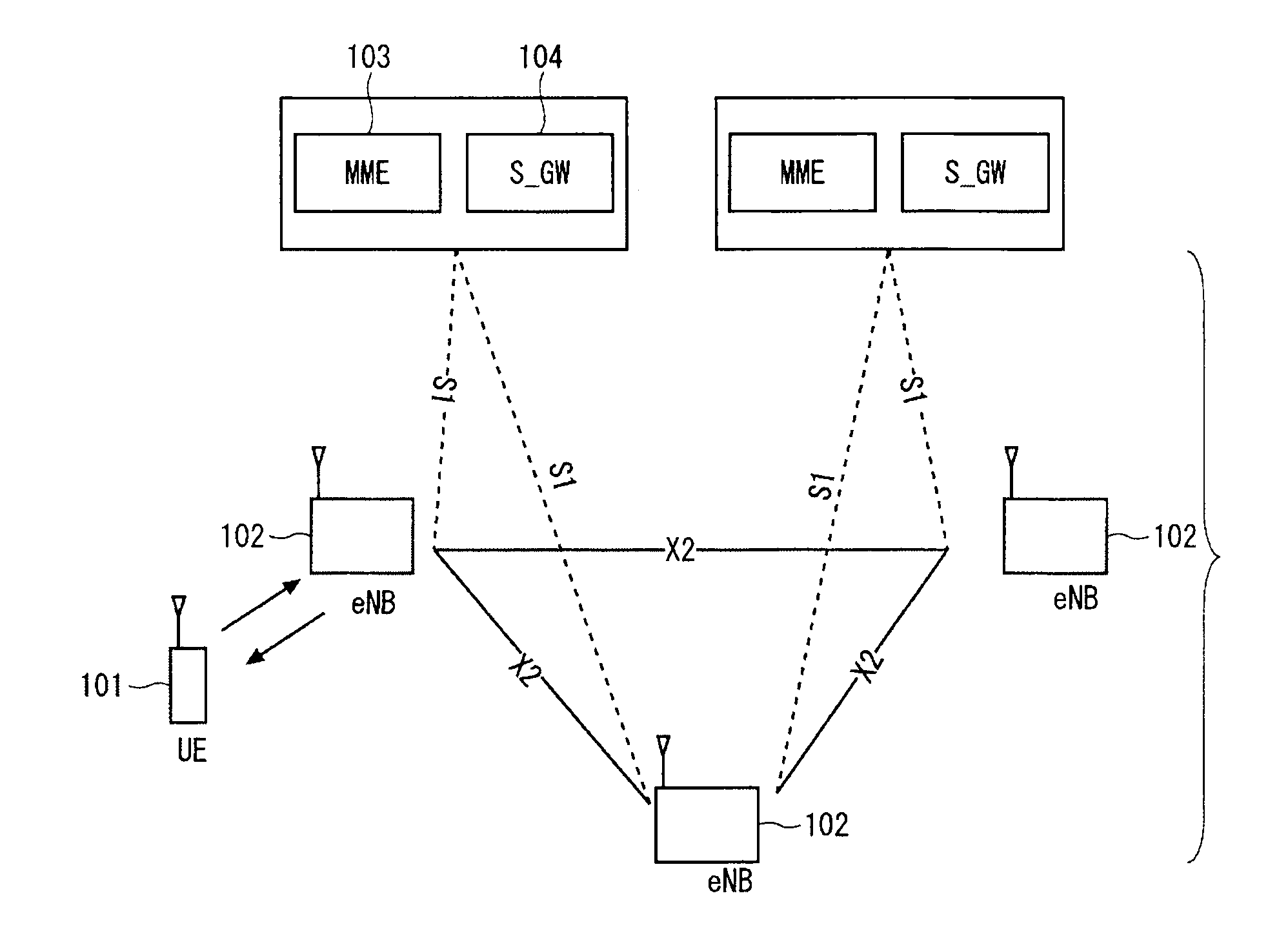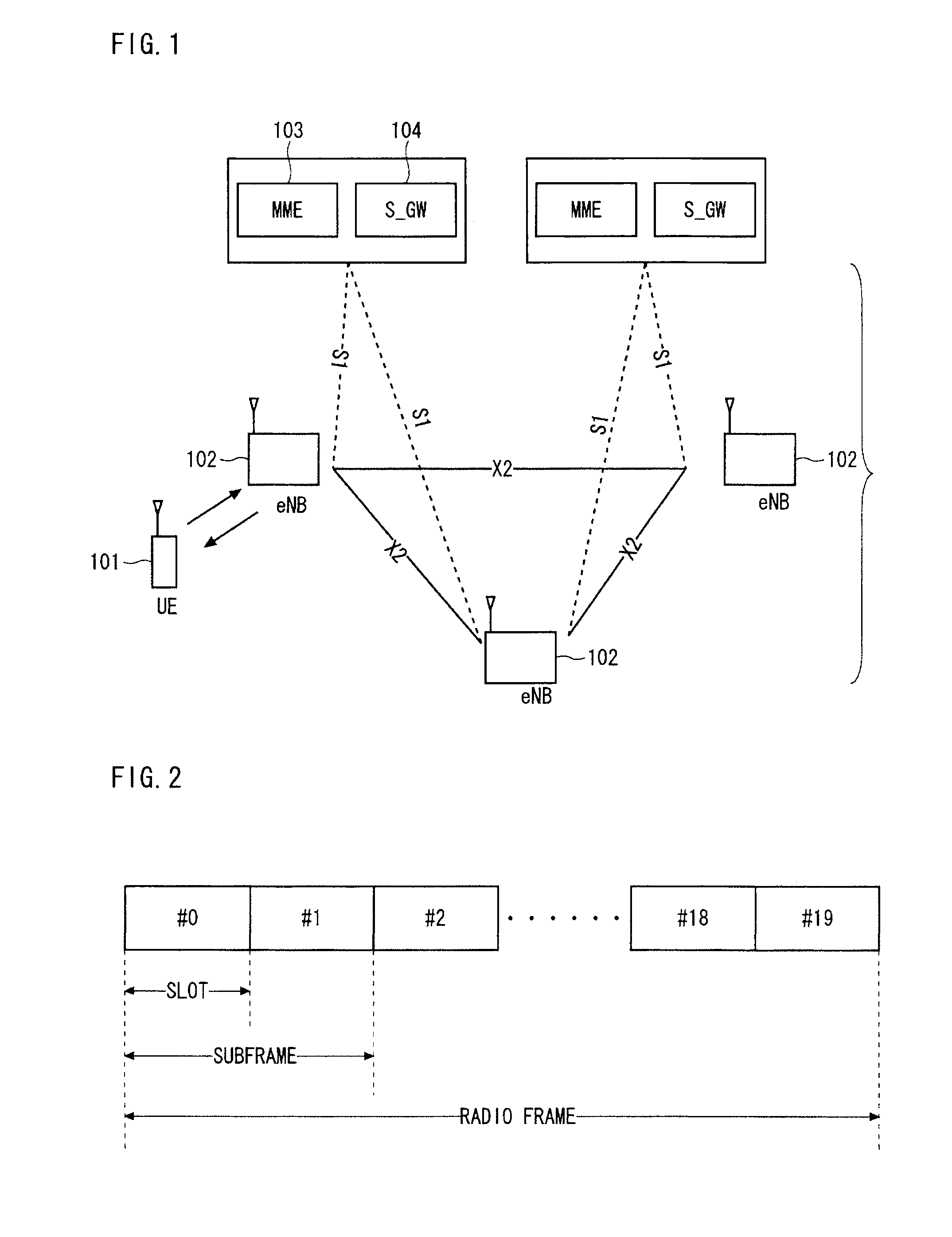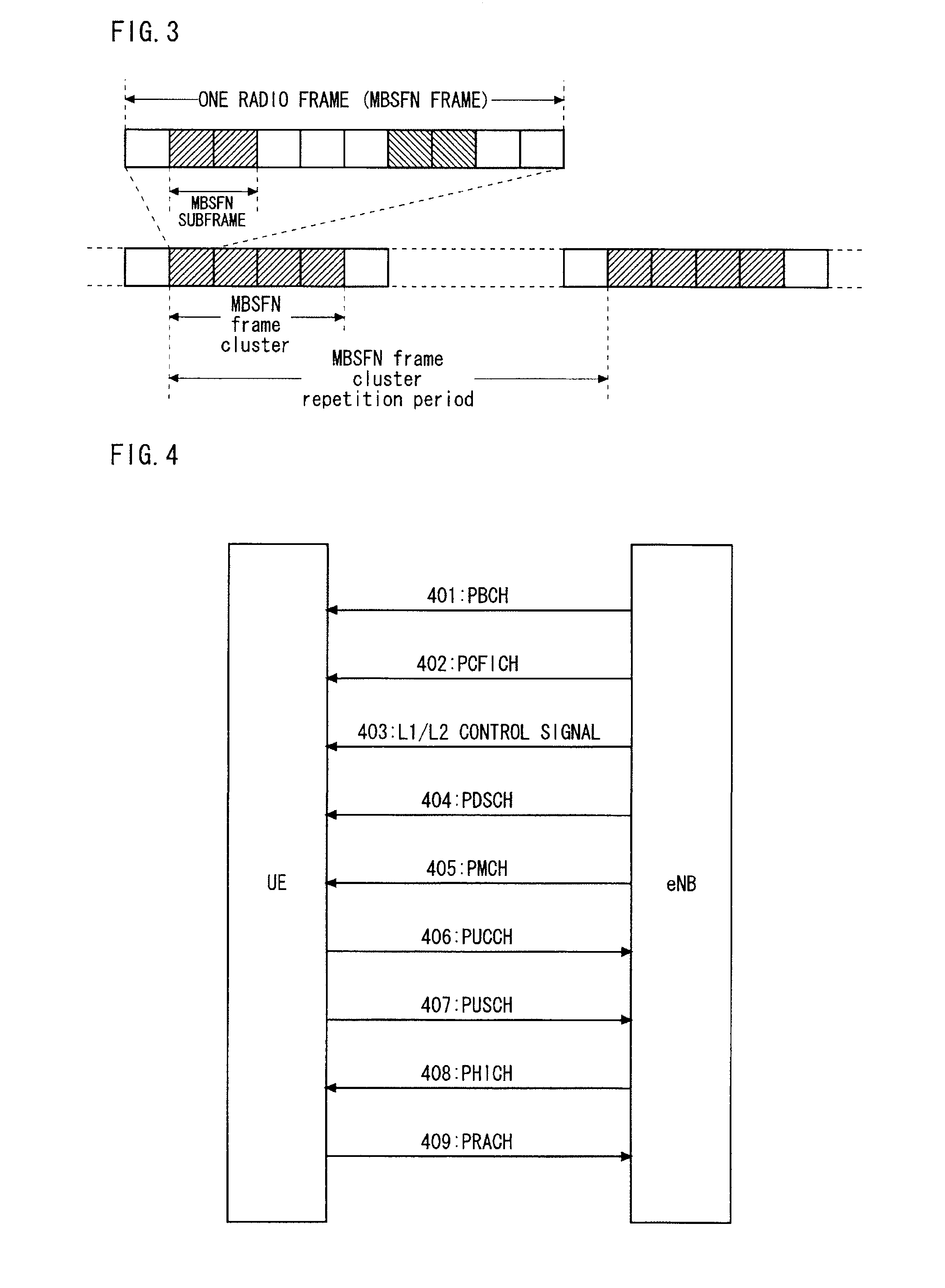Mobile communication system
a communication system and mobile technology, applied in the field of mobile communication system, can solve problems such as collision risk
- Summary
- Abstract
- Description
- Claims
- Application Information
AI Technical Summary
Benefits of technology
Problems solved by technology
Method used
Image
Examples
first embodiment
[0095]FIG. 7 is a block diagram showing an overall configuration of an LTE mobile communication system, which is currently under discussion of 3GPP. Currently, 3GPP is studying an overall system configuration including closed subscriber group (CSG) cells (Home-eNodeBs (Home-eNB and HeNB) of e-UTRAN, Home-NB (HNB) of UTRAN) and non-CSG cells (eNodeB (eNB) of e-UTRAN, NodeB (NB) of UTRAN, and BSS of GERAN) and, as to e-UTRAN, is proposing the configurations of (a) and (b) of FIG. 7 (Non-Patent Document 1 and Non-Patent Document 3). FIG. 7(a) is now described. A user equipment (UE) 71 performs transmission / reception to / from a base station 72. The base station 72 is classified into an eNB (non-CSG cell) 72-1 and Home-eNBs (CSG cells) 72-2. The eNB 72-1 is connected to MMEs 73 through interfaces S1, and control information is communicated between the eNB and the MMEs. A plurality of MMEs are connected to one eNB. The Home-eNB 72-2 is connected to the MME 73 through the interface S1, and ...
second embodiment
[0196]The first embodiment discloses that any or both of the times (timings) and the frequencies of the physical resources to which the signals that cannot be scheduled are mapped are prevented from overlapping with each other. In addition, the first embodiment discloses that an offset is provided between cells to the physical resources to which the signals that cannot be scheduled are mapped, the transmission timings of the physical resources and the frequencies to which the signals that cannot be scheduled are mapped. The conceivable range of those offsets is limited depending on a system, and by the method disclosed in the first embodiment. This is because, for example, there is a signal that is mapped over the entire frequency band to a specific symbol within each subframe among the signals that cannot be scheduled. For example, there are the L1 / L2 control signals in the LTE. The method of the first modification of the first embodiment is applied as to the above-mentioned signal...
third embodiment
[0212]The interference of downlink signals is a problem between the cells where handover cannot be made or with the cell operated in a closed access mode. As the solution thereto, the first embodiment discloses that the radio resources of signals that cannot be scheduled are prevented from overlapping with each other between the cells. As the method therefor, it is disclosed that synchronization is achieved between the cells or the resources of the signals that cannot be scheduled are shifted (an offset is provided) between the cells. Further, the second embodiment discloses the value used as the offset amount so as to solve the problem of the interference between downlink cells. The third embodiment discloses the method of determining the offset amount (or may be a frame configuration). Herein, the cell that has already been installed is referred to as a “first cell”. A cell to be newly installed, that is, a cell to be installed after the installation of the first cell is referred ...
PUM
 Login to View More
Login to View More Abstract
Description
Claims
Application Information
 Login to View More
Login to View More - Generate Ideas
- Intellectual Property
- Life Sciences
- Materials
- Tech Scout
- Unparalleled Data Quality
- Higher Quality Content
- 60% Fewer Hallucinations
Browse by: Latest US Patents, China's latest patents, Technical Efficacy Thesaurus, Application Domain, Technology Topic, Popular Technical Reports.
© 2025 PatSnap. All rights reserved.Legal|Privacy policy|Modern Slavery Act Transparency Statement|Sitemap|About US| Contact US: help@patsnap.com



